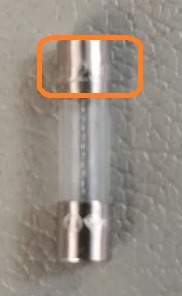Common Fuse Information
February 9, 2022
Fuses are a common circuit element and are key to protecting from overvoltage and overcurrent situations that can damage important circuits.
Fuse markings are typically stamped symbols located on the metal cap of the fuse.

Here is a helpful guide to common fuse markings used with instrumentation, taking a common fuse type as an example:
T 6.3A L 250V
The first letter, “T” in this case, is the fuse acting speed. Fast-acting fuses disconnect the circuit power more quickly than slow-acting.
The current rating is next. In this case, “6.3A”.
“L” is the fuse breaking capacity (or short circuit rating) which is defined as the amount of current that will cause the fuse to open if a fault or short circuit occurs. Low indicates very little over-current will cause an open. High capacity rated fuses will not open unless the current from a short circuit or fast event is significantly larger than the rated value of the fuse.
The maximum voltage rating is listed next, “250 V” in this case.
Table 1. Fuse Element Speed Markings
| Marking | Fuse Element Speed |
|---|---|
| FF | Very Fast Acting (Flink Flink) |
| F | Fast Acting (Flink) |
| M | Medium Acting (Mitteltrage) |
| T | Slow Acting (Trage) |
| TT | Very Slow Acting (Trage Trage) |
Table 2. Fuse Breaking Capacity Markings
| Marking | Fuse Breaking Capacity |
|---|---|
| H | High Breaking Capacity |
| L | Low Breaking Capacity |
